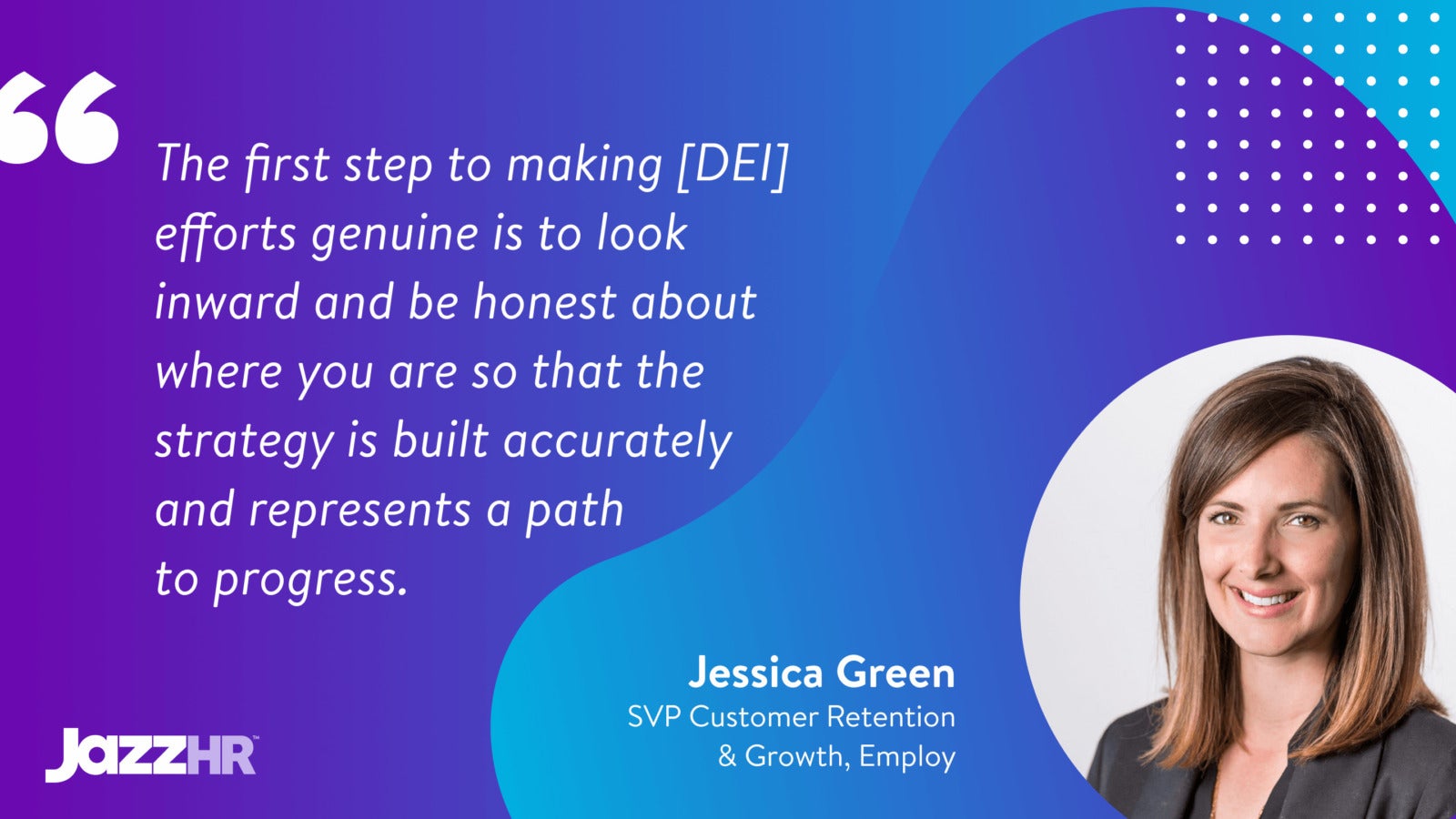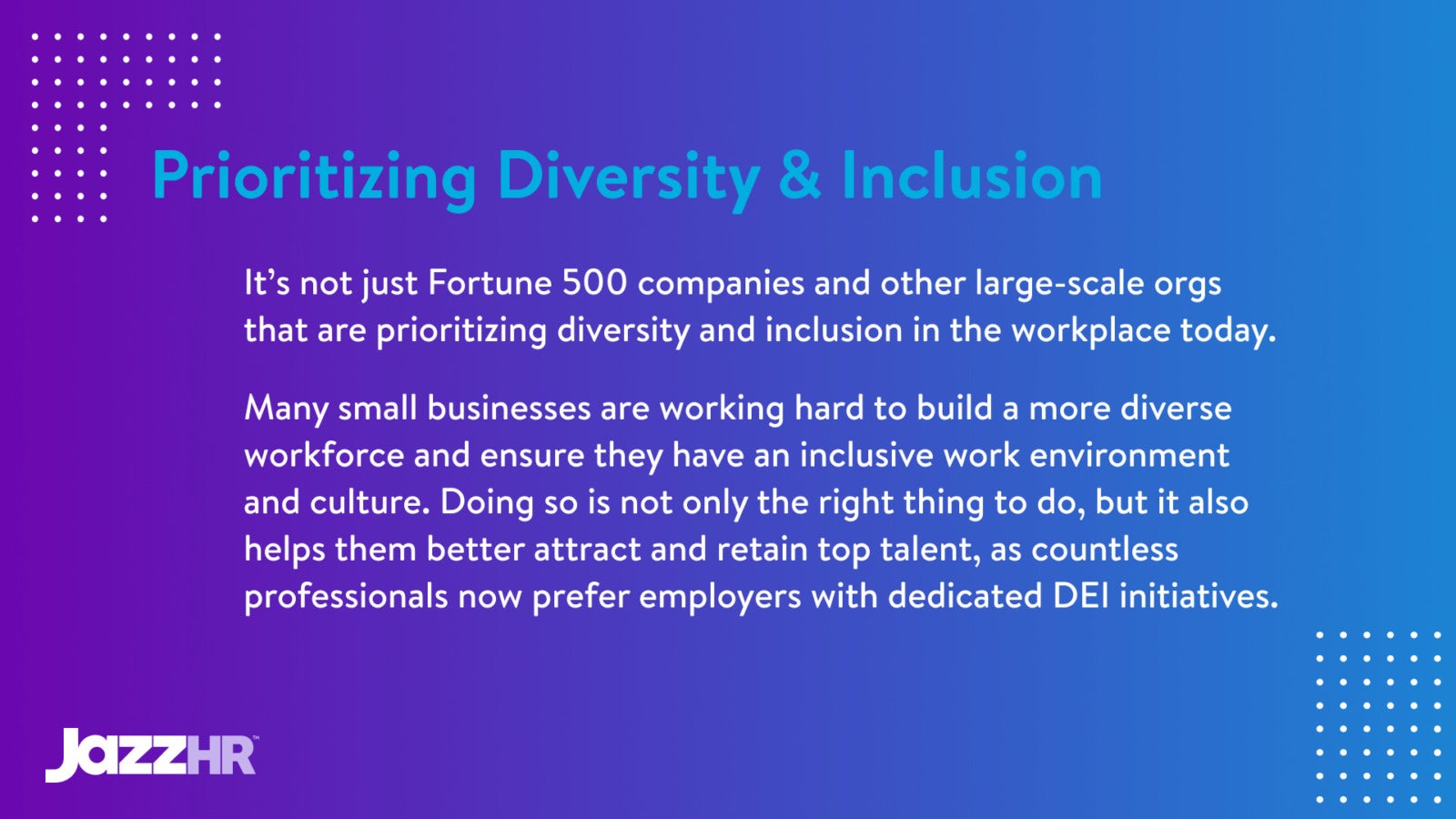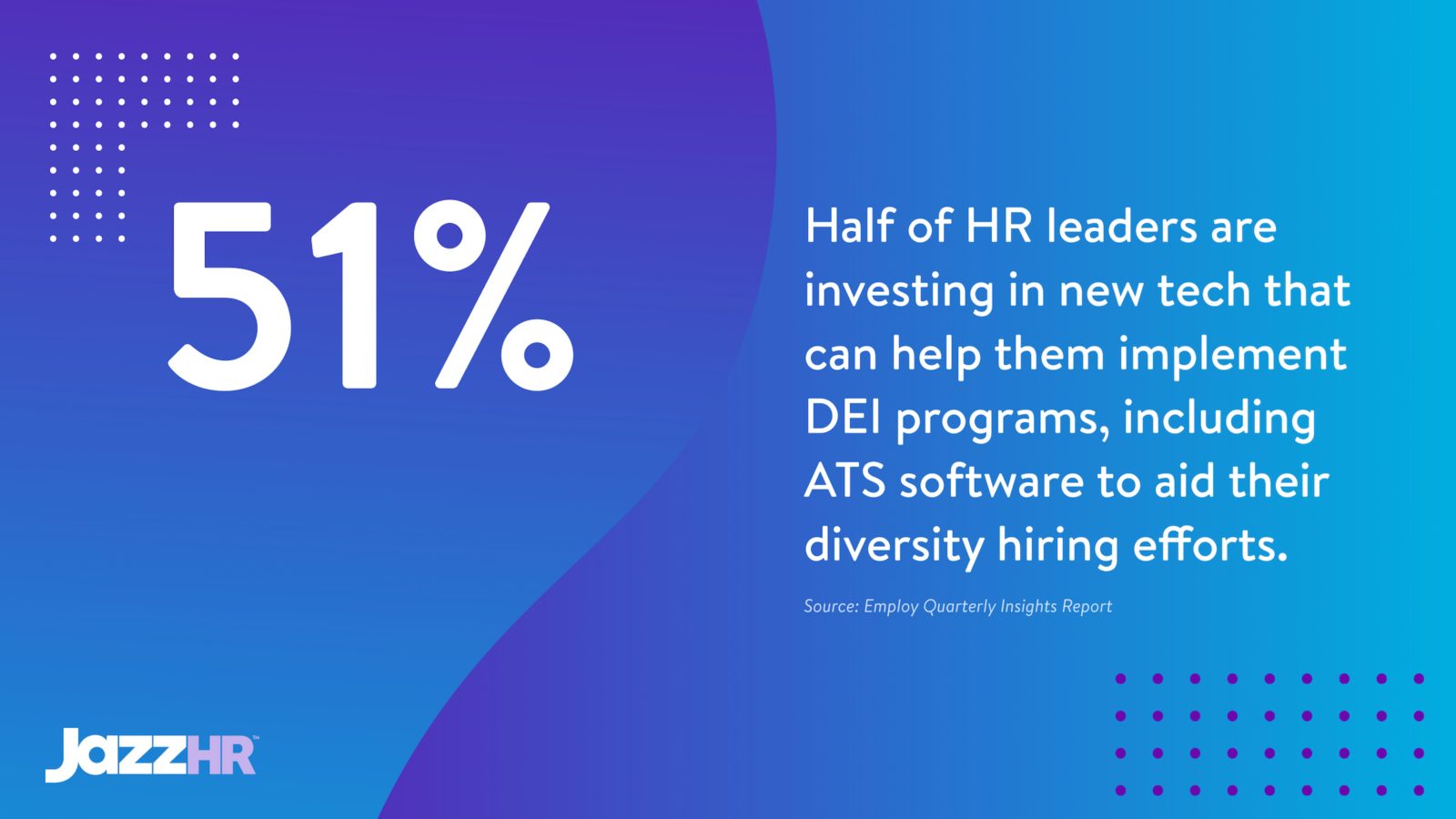Recruiting a diverse workforce is critical to creating a productive, equitable environment for all employees. To accomplish this vision, though, your first need to know how to attract more diverse employees — and understand what it takes from a logistical standpoint to create a diverse workforce.
Hiring employees from different backgrounds — regardless of gender, race, ethnicity, culture, physical abilities, religion, and sexual orientation — is not only the right thing to do, but it also leads to higher levels of innovation and engagement, according to a number of recent studies.
It’s simple, really: Job seekers with unique life experiences want to work for employers who offer equal opportunity to all members of the workforce, have a company culture that prioritizes inclusion in the workplace, and set employees up for success in their distinct job functions.
So, that begs the question: How can your small business go about improving diversity in the workplace?
The steps to realizing a more diverse workforce
To start, follow these research-based best practices at key stages of your recruiting funnel, and your small business will be able to attract and retain the most diverse workforce possible:
- Job Descriptions
- Interviews
- Assessments
- Referrals
Job Descriptions
The job description is your first chance to make a good impression on candidates. An inclusive posting — one that attracts candidates from all backgrounds — can widen your talent pool.
Pay close attention to the language you use in your postings to avoid exhibiting gender bias, for example. If your ad exhibits phrasing that dissuades female candidates from applying, you’ll miss out on an entire subset of skilled workers.
Analysis by Textio, a language analysis tool, discovered that language bias in job posts predicts the gender of hires. More masculine phrases, for instance, are associated with better hiring outcomes for men and the reverse is true for women.
Steps you can take to reduce bias and advertise your job to a diverse pool of talent include:
- Use gender-neutral titles in job descriptions and non-gendered pronouns (“you”, “s/he”) when describing your ideal candidate. Non-gendered titles and pronouns will also signal your inclusive culture to potential applicants.
- Remove gender-charged words. Consider using a tool like Textio or the free Gender Decoder to identify male-biased language. Words like “analyze” and “determine,” for example, have been found to be associated with male traits, while “collaborate” and “support” are considered female. Replace masculine-coded phrases like “kill it,” “crush it,” and “dominate” with more gender-neutral language like “thrive in.”
- Limit the number of adjectives you use to describe your ideal candidate and opt for gender-neutral qualifiers that express the hard and soft skills required in the job. Gender-charged adjectives associated with masculinity can turn off female applicants. Examples of male-biased words to avoid include “ninja,” “competitive,” “hacker,” “rockstar,” and “wizard.”
- Reduce the number of requirements in your job description, and include only the absolutely necessary qualifications to encourage applications from male and female candidates. You can screen for other qualifications later in your hiring process. Research shows that women are less likely to apply to a position if they do not meet 100% of the job requirements, whereas men apply when they meet only 60% of the qualifications. The more qualifications you include, the more likely you will introduce gender bias into the ad and turn away talented candidates. Your best candidates may be ones who do not meet all your desired requirements.
- Consider not listing a specific major or degree. Men and women make different choices when it comes to college majors. Requiring a specific major can unnecessarily narrow the set of candidates who apply to your open position.
- Get rid of superlatives like “best,” “superior,” and “first-rate.” Instead, use terms that reflect specific skills in line with the job requirement and that do not rely on the applicants’ perception of their own abilities. Research shows that, due to gender norms about modesty, women are less likely to brag about their accomplishments than men. Men are also more likely to overestimate their abilities in comparison to women. Using superlatives in your job description (e.g. best, superb, expert, first-rate, superior, unique, world-class, formidable) will discourage qualified female applicants, who are less likely to view themselves in these terms than male candidates. Superlatives are often redundant and add little to your job description.
- Promote your family-friendly benefits if you offer them. Benefits like childcare subsidies, parental leave, and flexible hours will attract a wider selection of candidates.
- Affirm your commitment to diversity and equality. Including a diversity statement at the end of your job description will show potential candidates that you foster a friendly and inclusive work environment and that they will be accepted in your culture.
Interviews
Unconscious biases play a key role in interviews. A study in the Journal of Occupational and Organizational Psychology found that interviewers often make up their minds within the first few minutes of an interview. These snap decisions are then shaped not by the individual merit of an applicant but by favoring candidates similar to the interviewer.
The unconscious bias also extends to socioeconomic background, as a recent Yale study showed that candidates perceived to be from higher social classes were more likely to be judged competent for the job and a better fit than candidates perceived to be from lower social status.
Here are some tips to mitigate bias in your interview process:
- Standardize the interview process. Create a set of questions and conduct a post-interview debrief. Candidates should be asked the same set of questions in the same order to ensure you are able to compare similar interview experiences. Unstructured interviews, which based decisions on non-job-related qualities like gender or likability, allow unconscious biases to influence the outcome. Structured interviews let employers “focus on the factors that have a direct impact on performance” and in this way minimize bias. They’re also better at predicting on-the-job performance.
- Implement video interviews. Individual impressions and even interview notes can be inaccurate and biased. Video technology will give you the opportunity to revisit the interviews later and empower your team members to make their own evaluations. When interviews are viewed by several people, they can check each other’s biases.
- Train your interviewers to avoid snap judgments and to concentrate on job-related criteria. This will help to reduce the unconscious weight placed on a candidate’s gender, age, race, and other traits. Consider also implicit bias training.
- Ask female candidates more detailed questions about their accomplishments. Women tend to downplay their contributions and experiences and are often given less credit for their work. Their success is also more likely to be attributed to external factors like help from others or good luck, while men’s success tends to be attributed to their skill. Try to compare the accomplishments of male and female candidates before introducing other criteria.
- Separate the evaluation of accomplishments from the evaluation of potential to reduce gender bias. Studies have found that women tend to be judged on their past performance, while men are assessed based on their potential.
- Assess skills and personality separately. Interviewers are more likely to prefer candidates similar to themselves, even if other candidates are more qualified. Women are also often penalized for exhibiting traits applauded in men like ambition. To avoid these biases, ask specific questions and present work tasks that match the job role the candidate is applying for to ensure you can evaluate their problem-solving skills in a real-world scenario and not be swayed by personal impressions.
- Avoid penalizing female candidates for being mothers. The perception that mothers may be unavailable due to parenting responsibilities can lead interviewers not to treat them the same as other candidates.
- Screen for culture “add” and not culture “fit.” If your corporate culture is more heavily weighted toward one gender, you’ll miss out on great candidates by focusing on how they fit within your existing culture (and not on what they can bring to the table). Focusing on “culture add” will mitigate unconscious bias in your process.
- Have all interviewers use the same guidelines and scoring method when they evaluate and rank candidates. Define the criteria you will use to evaluate the skills and fit of candidates for various job positions before the interview and rely on them consistently. Evaluate the candidate’s skills first before looking at personal characteristics to reduce gender bias. Creating standardized scorecards can help you screen for the candidate’s aptitude.
- Involve a diverse group of people in the interview and evaluation process. The more diverse the interviewer cohort is, the more diverse the perspectives and hires you will end up with.
Assessments
Pre-employment tests can help you find candidates who will have the skills and fit to be successful at your company. They can also reduce time spent on recruiting and the role of conscious and unconscious biases.
- But, they don’t give the whole picture of a candidate. Assessments assume everyone responds in the same way to statements and situations when this is not in fact the case.
For example, research by Codility, a platform for testing coding skills, suggests that female and male candidate approach assessment tests differently: female candidates edit their solutions and double-check their code more than male candidate, but they also “give up” more, using less of their allotted time and scoring lower than male candidates.
- Evaluate candidates holistically, looking at their work history and education, and avoid relying solely on assessments to make initial decisions. Consider that candidates from different genders and backgrounds may respond differently to assessment tests. If you opt to use assessments, make sure they are well-validated and that you’re conducting them in a standardized way.
- Take into account other factors like diversity that are not measured by the assessment before you make your decision. Once you decide how assessments can help you reach your recruiting objective, whether it is by reducing recruiting time or identifying qualified applicants, consider these other qualities.
Referrals
Research has shown that a more diverse workforce can help companies out-innovate and out-perform their competitors. Firms with a more inclusive hiring policy can recruit from a broader spectrum of talent and this practice is associated with a boost in innovation.
A highly diverse company, therefore, can draw on a greater range of expertise, backgrounds, and perspectives of its employees and management who come from a variety of backgrounds and have distinct experiences. Here are some tips to increase diversity in referrals and hiring:
- Encourage referrals from female and minority employees. Diversity invites diversity and helps check cognitive biases and blind spots. People from different backgrounds are unlikely to refer similar candidates.
- Consider rewarding employees for referrals or successful hires to increase participation. Cash and non-cash incentives have been found to be effective strategies for referral incentivization.
- Analyze the metrics of your referral program, including the percentage of candidates sourced and hired through referrals in comparison to other channels and the diversity of referred candidates. Solicit feedback from employees and candidates about the referral process.
- Involve people from different backgrounds and perspectives in hiring and encourage a collaborative process. Enlist a wide pool of people from your organization to review applications and provide inputs and interview notes on candidates. Everyone will tend to focus on something different and in this way you can mitigate any bias that arises from having one person or fixed team make assessments and hiring decisions.
Accelerate your diversity hiring and build a more diverse workforce with help from JazzHR. Our ATS empowers SMB recruiters to better attract and engage talent from underrepresented groups.








